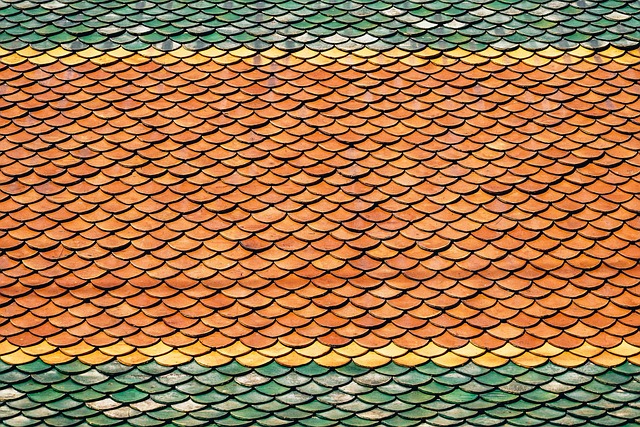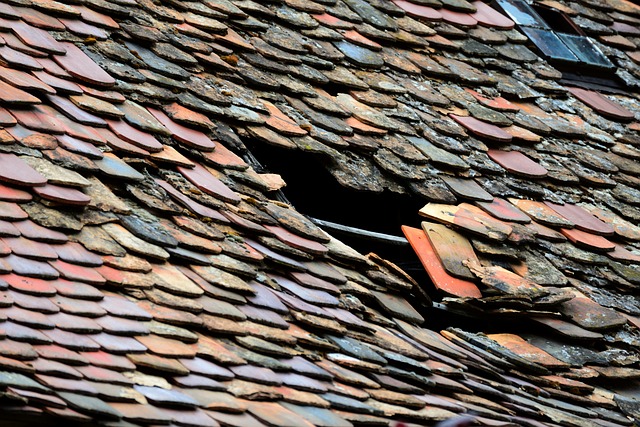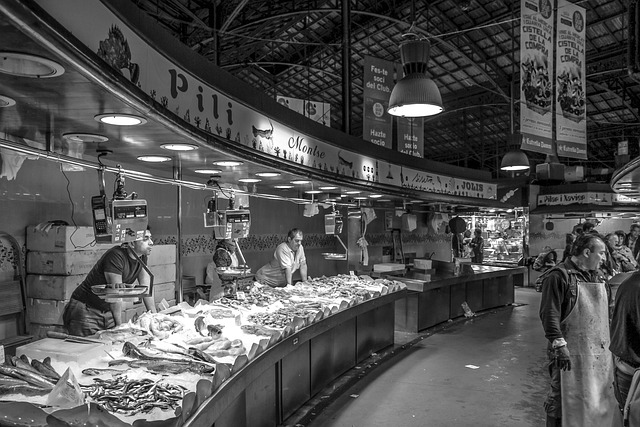Commercial roofing demands diverse materials and designs tailored to large-scale structures, including flat, low-slope, and steep-slope options. Regular, thorough inspections are crucial for maintaining integrity, longevity, and functionality of these systems, guarding against leaks, structural failures, and costly repairs. Professional assessments cover multiple critical elements, identifying age-related issues, ensuring compliance with local codes, and preventing interior damage. The integration of technology like drones and digital platforms enhances safety and efficiency in inspections. Legal and insurance implications further underscore the importance of regular commercial roofing inspections to avoid penalties and secure coverage.
Commercial roofing is a critical component of any business’s infrastructure, protecting valuable assets from the elements. This comprehensive guide delves into the essential practice of commercial roof inspections, detailing best practices and recent technological advancements. From understanding common roofing types to identifying potential issues, we explore key components crucial for thorough assessments. Learn about legal considerations, safety measures, and how technology is revolutionizing inspections, ensuring your commercial roofing investment remains in optimal condition.
Understanding Commercial Roofing: An Overview of Common Types and Materials

Commercial roofing encompasses a wide range of materials and designs tailored to withstand the unique challenges of large-scale structures. Common types include flat roofs, low-slope roofs, and steep-slope roofs, each requiring specific inspection considerations. Flat roofs, prevalent in older buildings, often utilize bitumen or EPDM (ethylen propylene diene monomer) membranes, known for their durability and ease of repair.
Low-slope roofs, typically found on commercial structures like office buildings and malls, employ materials such as TPO (thermoplastic olefin) and PVC (polyvinyl chloride), offering excellent resistance to punctures and weathering. Steep-slope roofs, characteristic of churches and historic buildings, involve more traditional materials like asphalt shingles or metal, demanding meticulous inspection for structural integrity and water tightness.
The Significance of Regular Inspections for Commercial Roofs

Regular inspections are paramount for maintaining the integrity and longevity of commercial roofing systems. Unlike residential roofs, commercial structures often boast larger and more complex roofing structures that support significant loads, house critical equipment, and protect valuable assets inside. As such, they demand meticulous care and proactive monitoring to mitigate risks effectively.
Infrequent or overlooked inspections can prove costly, leading to severe damage from leaks, structural weaknesses, or even complete roof failures. Proactive assessments allow for the early detection of wear and tear, potential hazards, and necessary repairs, preventing extensive and expensive renovations down the line. Well-maintained commercial roofs enhance safety, ensure operational continuity, and safeguard investments in these essential business assets.
Key Components to Assess During a Commercial Roof Inspection

During a commercial roofing inspection, several key components must be assessed to ensure the roof’s structural integrity and longevity. These include examining the roof’s surface for any signs of damage or wear, such as missing shingles, leaks, or blisters. Also, inspect the flashing around vents and chimneys, ensuring it is secure and sealed properly to prevent water intrusion. The drainage system should be evaluated for clogs or obstructions that could lead to water pooling and potential roof damage. Check the condition of the underlayment, looking for tears, holes, or moisture issues, as these can compromise the roof’s waterproof barrier.
Additionally, assess the structural components like trusses, purlins, and brackets for signs of rot, corrosion, or misalignment. Look for proper ventilation in the attic space to prevent excessive heat and moisture buildup, which can lead to early roofing material degradation. Verify that all connections between roof components are securely fastened and sealed. Lastly, evaluate the overall system for age-related issues and ensure compliance with local building codes and safety regulations, ensuring a safe and durable commercial roofing system.
Identifying Potential Issues: Common Problems Found in Commercial Roofs

Commercial roofing inspections are crucial for identifying potential issues early on, preventing costly repairs and ensuring optimal building performance. During a thorough assessment, professionals look for common problems that often affect commercial roofs. One of the primary concerns is leaks, which can arise from various sources like damaged or missing shingles, flashing issues, or poorly sealed joints. These leaks not only cause interior damage but also contribute to energy loss, as water penetration can compromise insulation efficiency.
Another prevalent issue is structural degradation, often caused by environmental factors such as extreme weather conditions, including heavy snowfall and strong winds. Over time, this can lead to sagging, uneven surfaces, or even collapse. Additionally, commercial roofs may suffer from poor drainage systems, which can result in water pooling and potential damage to the roof deck. Inspectors also check for signs of mold growth, especially in areas with compromised ventilation, as it not only affects the building’s interior air quality but also accelerates the deterioration of roof materials.
Safety Measures and Best Practices for Conducting Commercial Roof Inspections

When conducting commercial roof inspections, safety should always be the top priority. It’s crucial to wear appropriate protective gear, including hard hats, eye protection, and sturdy footwear. Inspectors should also ensure they’re familiar with the building’s layout and have a clear understanding of the roof’s design before beginning their assessment. Proper communication is key; teams should maintain constant contact during inspections to prevent accidents and address any potential hazards promptly. Regular training and up-to-date knowledge about safety protocols are essential for all personnel involved in commercial roofing.
Best practices dictate that inspections be thorough yet methodical. Inspectors should examine the roof’s structure, flashing, drainage systems, and materials for signs of damage or wear. Documenting findings with high-quality images is an effective way to track repairs over time. Staying current on industry standards and local regulations ensures compliance and helps maintain the integrity of commercial roofing systems. Regular maintenance and timely repairs based on inspection results are vital to prevent costly replacements and ensure the longevity of commercial roofs.
Technology Advancements in Commercial Roofing Inspection

The evolution of technology has significantly transformed the landscape of commercial roofing inspections, offering more efficient and comprehensive assessments than ever before. One of the most notable advancements is the integration of drones and aerial imaging. Equipped with high-resolution cameras and thermal sensors, these unmanned aerial vehicles (UAVs) can capture detailed images of vast roof areas in a fraction of the time it would take a team of inspectors on foot. This not only enhances safety but also provides a bird’s-eye view, making it easier to identify issues like missing or damaged shingles, flashing problems, and signs of water intrusion.
Additionally, digital inspection platforms have revolutionized data collection and management. These user-friendly applications allow inspectors to document findings in real time, complete with photos, videos, and detailed notes. The data is then securely stored in the cloud, enabling easy access and collaboration among team members. This technology streamlines the entire inspection process, from initial planning to final reporting, ensuring that commercial roofing projects are completed with precision and according to industry standards.
Legal and Insurance Considerations for Commercial Roof Inspection Procedures

Commercial roofing inspections are not just essential for maintaining the structural integrity of a building; they also carry significant legal and insurance implications. In many jurisdictions, commercial property owners are legally obligated to conduct regular roof inspections to ensure compliance with safety regulations. Failure to do so could result in fines or even liability for any damages that arise due to preventable issues.
Moreover, insurance providers often require comprehensive inspection reports as part of their risk assessment process. A well-maintained roof, supported by detailed inspection documentation, can help commercial property owners secure more favorable insurance rates and terms. Conversely, neglected roofing issues can lead to costly claims or even denial of coverage. Therefore, understanding the legal requirements and insurance expectations is crucial for every commercial roofing inspection procedure.
